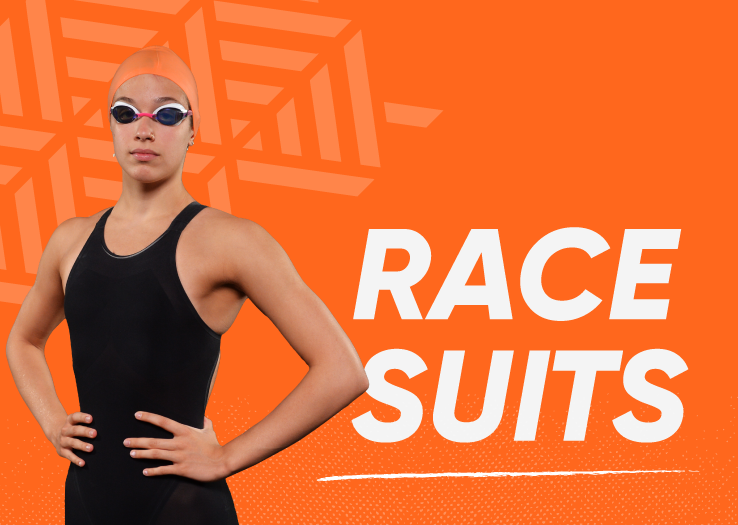Blog

Race Suits
Race suits are specifically designed for swimming competitions, crafted from specialized fabrics that reduce skin drag, enhance streamlining, and provide a speed advantage. At Hamilton, most competitive swimmers, regardless of age or competition level, wear high-quality race suits (racing briefs or knee-suits). These top-tier suits, often known as tech suits, feature the latest designs.
Early Morning to Evening: Race Suit Routine
Our younger swimmers frequently arrive at competitions as early as 7 am, already dressed in their race suits, and wear them throughout the day's events, only changing after returning home at night. This blog aims to educate our athletes and their parents on selecting the right race suit, deciding if one is necessary, and determining the appropriate time to invest in this advanced sports technology.
The Evolution of Race Suits
Around the year 2000, significant investments in swimwear innovation transformed ordinary swimsuits into performance-enhancing gear. Engineers developed suits mimicking the skin of sea creatures like sharks. This rapid evolution led to knee-suits, leg-suits, and full-body suits, with swimmers covered in tight-fitting material from wrists to ankles. These advancements quickly broke world records, shifting competition focus to the gear rather than the swimmer's speed. As a result, FINA (now World Aquatics) introduced regulations on swimsuit materials and designs, refocusing competitions on swimming skill. Today, tech suits are limited to knee-suits for females and knee-length briefs for males, all requiring World Aquatics approval to avoid disqualification.
Choosing the Right Suit
Swimmers today have a wide variety of race suits to choose from. Leading brands like Speedo and Arena dominate globally, while brands like FINIS, TYR, and Mizuno cater to specific preferences and body types. For instance, Speedo, founded in Australia, designs suits based on Australian swimmers' measurements, while Arena, an Italian brand, models its suits on European athletes. Mizuno, rooted in Japan, and FINIS, an American brand, also reflect their origins in suit designs. It's crucial to consider individual swimmer measurements and consult brand-specific sizing charts to find the best fit, ensuring the suit feels like a second skin.
When to Wear a Race Suit
Despite the benefits, wearing a race suit is not a shortcut to success. Technique, fitness, nutrition, and psychology are paramount. Race suits provide marginal gains by reducing drag, similar to wearing a swim cap. Generally, swimmers over 13 years old should consider investing in a technical race suit, as younger swimmers are often restricted from competing in them. New suits should be reserved for peak performance meets, like summer target meets or final short course events of the season. Ensure suits are tight and worn briefly to maintain effectiveness. After approximately eight races, a suit transitions to an "old suit," still beneficial but with diminished new suit advantages. These older suits are suitable for in-season meets or race-specific training sessions for older athletes.
Caring for Your Race Suit
To maximize your suit's lifespan, rinse it in cold water immediately post-race to remove chlorine, which can deteriorate the fabric and water-resistant technology. Avoid machine washing and drying in direct sunlight.
By following these guidelines, you can choose the right race suit, wear it effectively, and care for it properly, ensuring your investment enhances your performance in every competition.

